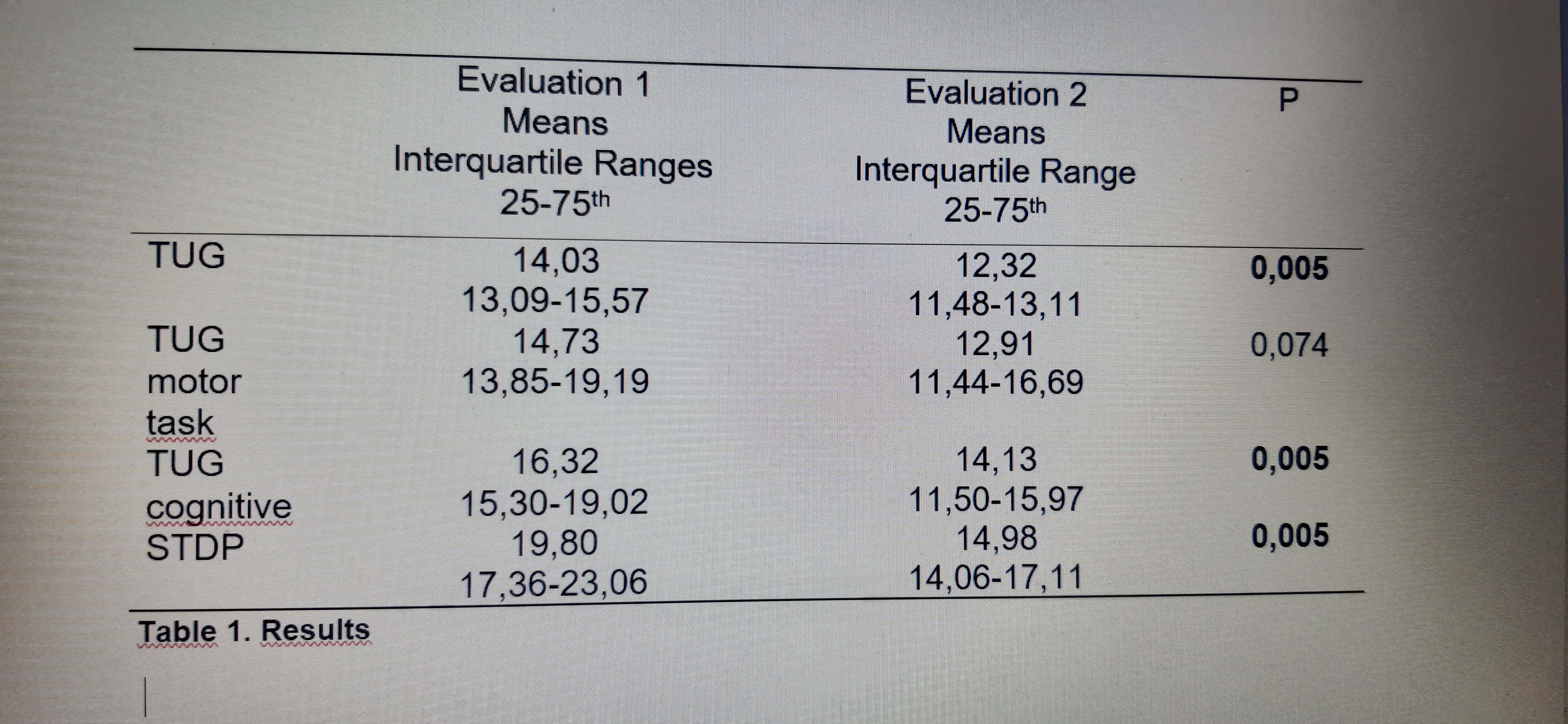Category: Allied Healthcare Professionals
Objective: Evaluate the effects of Aquatic Physical Therapy (APT) on the functional mobility of individuals with Parkinson’s disease (PD).
Background: PD is neurodegenerative, idiopathic, and progressive, and can impair functional mobility, balance, autonomy, and quality of life [1,2]. Thus, APT aims to improve these symptoms, based on the physical principles acting in heated water [2,3].
Method: Quasi-experimental research. Approval by the Research Ethics Committee of the HT/Curitiba/PR/Brazil, number CAAE: 05271512.7.0000.5225. Simple Timed up and go (TUG), cognitive and motor dual-task situations and Five Times Sit to Stand Test (FTSST) applied before and after the intervention. The APT program lasted 12 weeks, twice a week, 40 minutes per session, in a pool heated to 33°C. APT was based on Israel and Pardo [4] study, with exercises for strength and muscle power of the lower limbs, functional activities, and balance. Statistical Package for Social Sciences version 20.0 (SPSS 20.0) was used with Shapiro-Wilk and Wilcoxon tests. Results were expressed as a median and interquartile range from 25th to 75th. p < 0.05 was adopted.
Results: Ten individuals with PD participated, 4 men and 6 women, with a mean age of 64.8±14.06 years and Hoehn & Yahr between 2 and 4. To test the Gaussian distribution, the Shapiro-Wilk test was used. As the data from the TUG motor test were non-parametric, the Wilcoxon test was used. Simple TUG, TUG with dual cognitive task, and STDP showed significant differences. The TUG with dual motor tasks did not change significantly. The results are detailed in Table 1.
Conclusion: Mobility may be restricted by a series of factors such as gait alterations, balance deficit, and muscle weakness in the lower limbs [2]. The reduction of time to perform the STDP, simple TUG, and TUG dual cognitive task allows us to infer that there was an improvement in executive function and automated skills, even allowing the performance of dual tasks more quickly. Thus, we can conclude that the AF program was effective on the functional mobility of individuals with PD, with possible reductions in the risk of falls.
References: 1 – ARMSTRONG, MJ.; OKUN, MS. Diagnosis and treatment of Parkinson disease: a review. Jama, v. 323, n. 6, p. 548-560, 2020.
2- SIEGA J, IUCKSCH DD, SILVA AZ, ZOTZ TGG, ISRAEL VL. Parkinson’s disease and multicomponent aquatic exercise: Effects on motor aspects, functional mobility, muscle function and aquatic motor skills. J Bodyw Mov Ther. n.27. 314-321. 2021..
3- SILVA AZ, ISRAEL VL. Effects of dual-task aquatic exercises on functional mobility, balance and gait of individuals with Parkinson’s disease: A randomized clinical trial with a 3-month follow-up. Complement Ther Med. N42. 119-124. 2019.
4- ISRAEL VL, PARDO MBL. Hidroterapia: proposta de um programa de ensino no trabalho com o lesado medular em piscina aquecida. Fisioterapia em Movimento, Curitiba, v. XIII, n.N.1, p. 111-127, 2000.
To cite this abstract in AMA style:
J. Siega, T. Christinelli, G. Leveck, A. Silva, V. Israel. Aquatic Physical Therapy: Effects on Functional Mobility in people with Parkinson’s Disease [abstract]. Mov Disord. 2022; 37 (suppl 2). https://www.mdsabstracts.org/abstract/aquatic-physical-therapy-effects-on-functional-mobility-in-people-with-parkinsons-disease/. Accessed December 24, 2025.« Back to 2022 International Congress
MDS Abstracts - https://www.mdsabstracts.org/abstract/aquatic-physical-therapy-effects-on-functional-mobility-in-people-with-parkinsons-disease/

